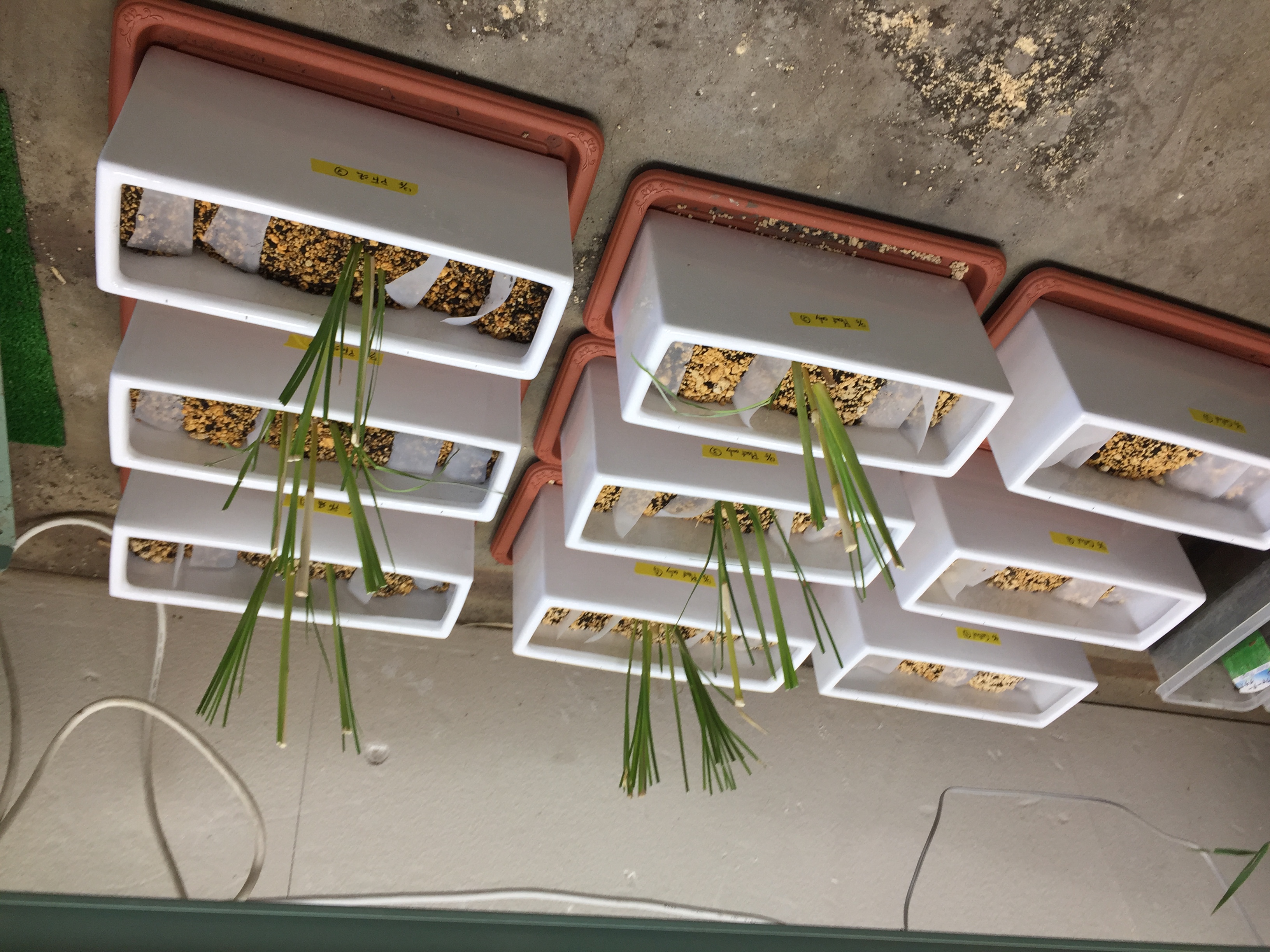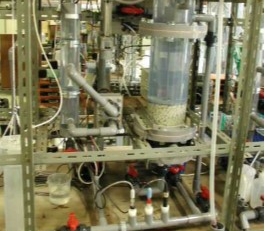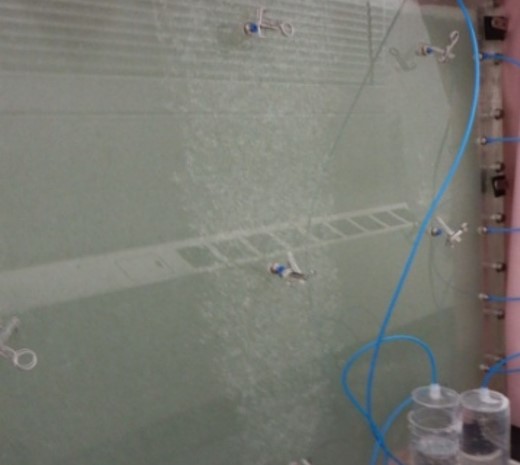土壌・地下水
Subsurface / Groundwater
研究概要
土壌や地下水は水循環系の主要な要素ですが、いろいろなルートから汚染物質が混入します.また、過去の人間活動の影響を受け続けています.化学肥料散布による世界的な地下水硝酸汚染や保管場所から漏出する残留性有機汚染物質(POPs)などはその一例です.このような汚染問題は健全な水循環を維持するうえで、また安全な水利用の視点から考えると大きな障害になります.当研究室で提案しているBio-Fenton法や水素利用脱窒法などの基礎研究を発展させるために、研究室内で実験装置をセットアップしていろいろな条件下で浄化能力を測定します.得られた結果を解析し、最も効率よく浄化を行うための装置設計条件や操作条件を明らかにします.
Research Summary
Soil and groundwater in subsurface environment are the main elements of the water cycle, but pollutants are introduced through various routes. In addition, the pollution of subsurface environment continues to be influenced by past human activities. Examples include groundwater pollutions by nitrate from chemical fertilizer applications and persistent organic pollutants (POPs) leaking from storage sites. Such pollution problems are major obstacles to maintaining a natural water cycle and from the perspective of safe water use. In order to develop fundamental studies such as the Bio-Fenton process and the hydrogen-based denitrification process proposed in our laboratory, we will set up experimental apparatus in the laboratory and measure the purification performances under different conditions. Observed data are analyzed to evaluate the optimum design and operating conditions for efficient purification.
研究トピックス
1.残留性有機汚染物質(POPs)汚染土壌の浄化試験
2.重金属汚染土壌のファイトリメディエーション
3.自然エネルギーを用いた地下水浄化法の開発
4.地下水の高精度水質シミュレーション、他
Research Topics
1.Purification experiment of POPs-contaminated soil
2.Phytoremediation of heavy metal contaminated soil
3.Development of groundwater purification process driven by natural energy
4.High-precision groundwater quality simulation, etc.
研究のポイント
POPsは残留性、長距離移動性、生物濃縮性および有害性が高く、その製造・販売・使用が禁止されています.しかしながら、途上国では処分されたDDTなどのPOPs農薬が保管場所から漏れ出して土壌や地下水を汚染している場合が多く、早急な対策が必要とされています.当研究室ではBio-Fenton法を応用した土壌浄化実験(Fig. 1)を行い、根圏が発達し高濃度の過酸化水素をつくるイネ科植物を用いることによりPOPsを除去できることを明らかにしました.一方、地下水は主要な水源でもあることから、世界的な地下水硝酸汚染も同様に重要な問題です.汚染地下水を汲み上げてオンサイトで高速浄化する方法(Fig. 2)と帯水層内で直接浄化する方法(Fig. 3)があります.これまでの研究から水素を利用する脱窒菌を集積することにより、高速・高効率で硝酸を安全な窒素ガスに変換できることを明らかにしました.加えて、土壌や地下水内で汚染物質が浄化される速度を解析し、地下環境中の汚染物質濃度を予測する数学モデルの開発を進めています.

Fig. 1 植物を用いたPOPs浄化試験.

Fig. 2 地下水の高速脱窒装置.

Fig. 3 模擬帯水層による浄化試験.
(中央白い部分が注入水素プルーム)
Research Points
POPs are highly persistent, long-distance mobile, bioaccumulative and harmful, and their manufacture, sale and use are prohibited. However, in developing countries, POPs pesticides such as DDT that have been disposed of often leak from storage sites and contaminate soil and groundwater, so urgent measures are required. In our laboratory, we conducted a soil remediation experiment(Fig. 1) applying the Bio-Fenton process, and found that POPs can be removed by using Gramineae plants that develop the rhizosphere and produce hydrogen peroxide in high concentration. On the other hand, since groundwater is also a major source of water, global groundwater nitrate pollution is an equally important issue. There are two approaches, one is to pump up contaminated groundwater and purify it on-site at high speed(Fig. 2), and the other is to purify it directly in the aquifer(Fig. 3). From the research so far, it was found that nitrate can be converted into non-toxic nitrogen gas at high rate and high efficiency by accumulating hydrogen-utilizing denitrifying bacteria. In addition, we are developing a mathematical model that predicts the concentration profiles in subsurface environment.

Fig. 1 POPs purification experiment.

Fig. 2 High-rate denitrification process

Fig. 3 Purification test using a simulated aquifer.
(White part is the injected hydrogen plume)